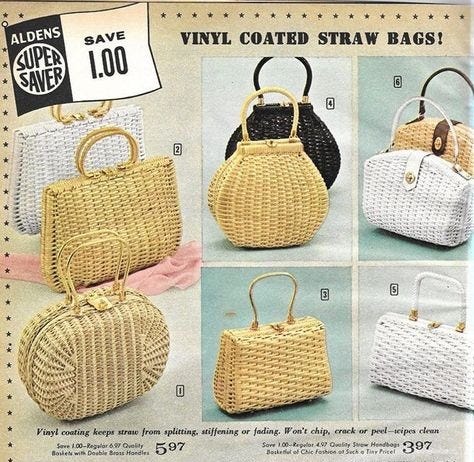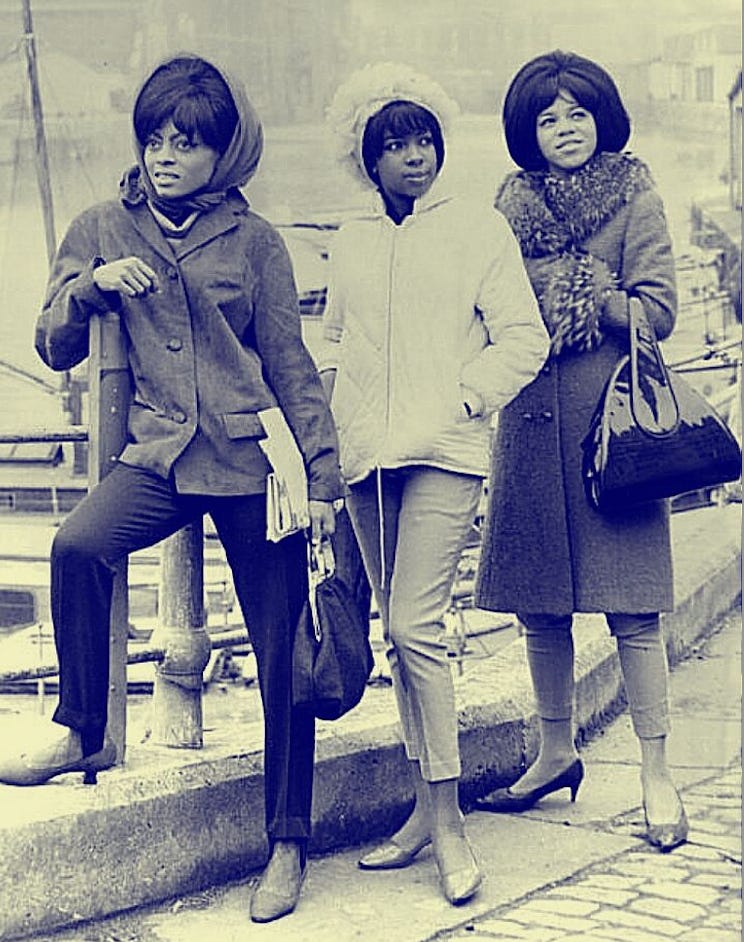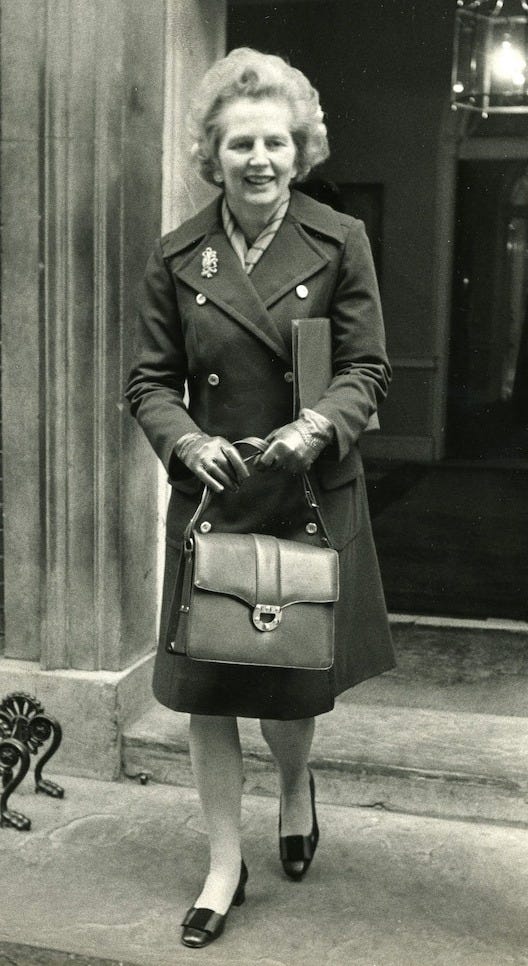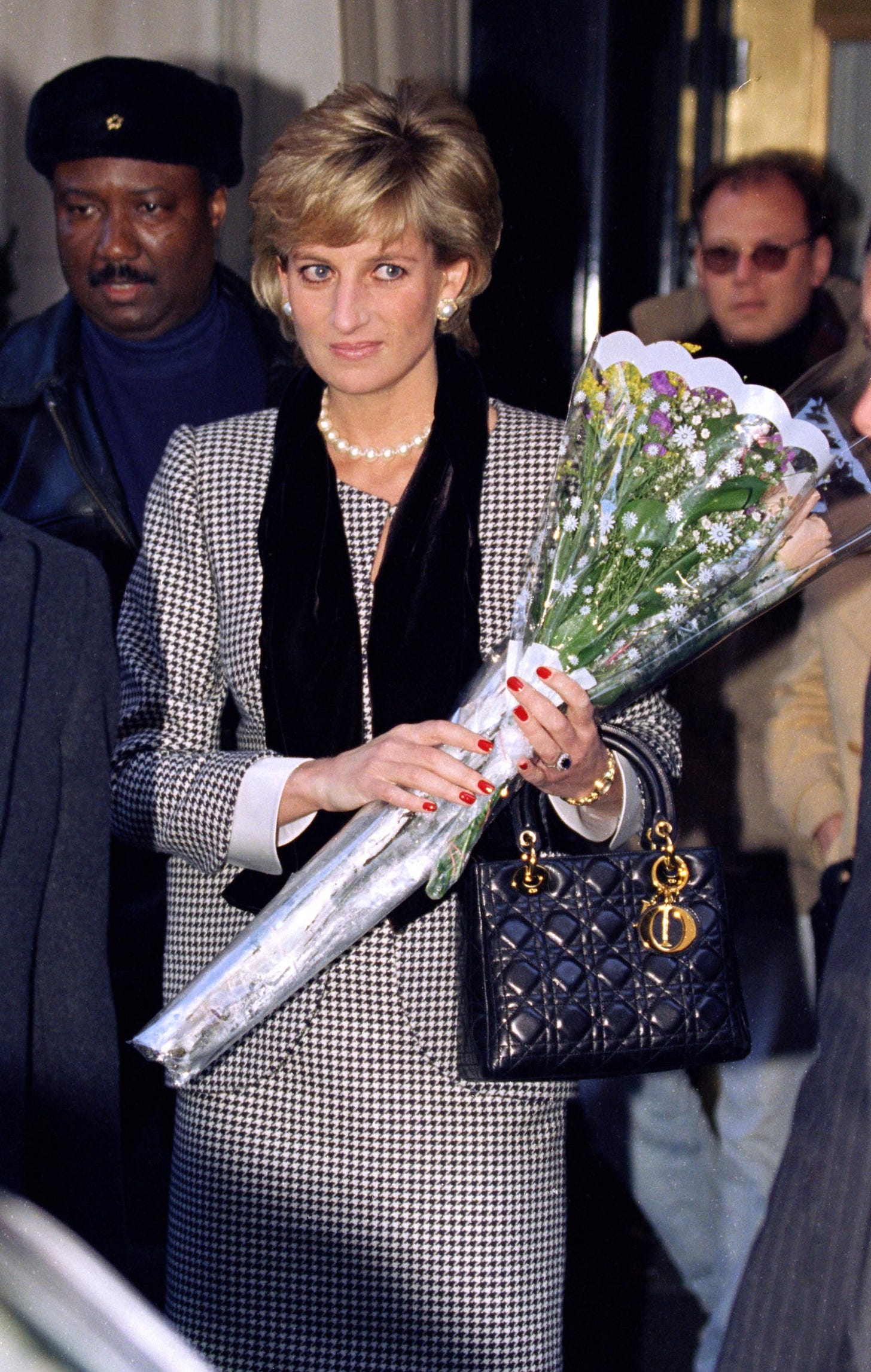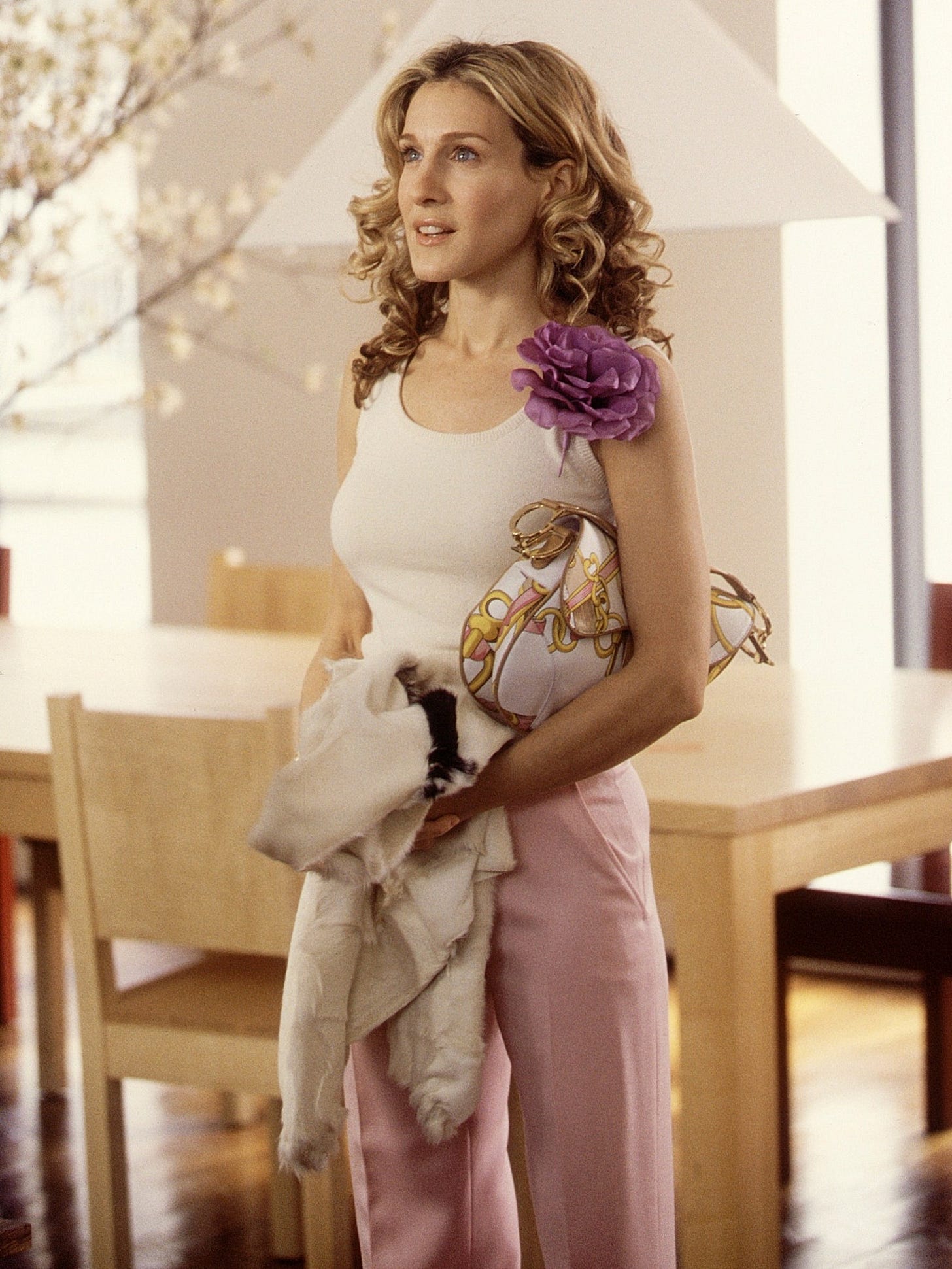So what happened? We covered what it took for my second book to come out and ten tips to inspire your kid to be an entrepreneur or to make sure your kid becomes independent and can be mildly self-sufficient by the time they are teenagers—all that good stuff. (Mine have been invoicing me since they were eight. True story.) All of that and my book, Savvy Suzanna’s Amazing Adventures in Handbags is available for pre-order on Amazon. I am not at all excited about that. ;)
Back to bags! We last left in the 1960s, when straw and raffia were imported and added to a new basket bag silhouette. This period marked the return of creativity and opulence in handbag design, emphasizing unique shapes, silhouettes, and vibrant colors.
In the 1960s, handbags became a bold form of self-expression, reflecting the social changes of the time. Nonconformist hippies embraced handmade bags made from natural materials adorned with patches and artwork. In contrast, space-age materials like PVC, polyurethane, ballistic nylon, velcro, and kevlar began to influence bag design.
Hippie favorites included fringed suede, hand-tooled leather, macrame, and tote-like shoulder bags. For conservative young women, fabric shops sold kits to create customizable bags with wood handles and embroidered initials. Designers like Bonnie Cashin for Coach introduced colorful leather bags (obsessed - see below), and Enid Collins invented the Box Bag. In 1965, handbags gained further significance when a repeal of excise taxes on luxury items—handbags included—was passed, cementing their status in fashion history.
In the 1970s, wild innovations were brought to handbags. The invention of wheeled suitcases revolutionized travel, and the barrel or cylinder duffel bag emerged as a simple and practical design for everyday use, particularly with synthetic materials as a counter to the traditional box bag. Again, check out handbag patents, it’s such a wealth of information.
Coach and Chanel both feature serial numbers on their bags to counter the new counterfeit culture, but these numbers can be faked, and their format has changed over time. Coach bags, for instance, had a format of three digits, a dash, and four digits in the 1970s, which shifted to four digits, a dash, and three digits in the 1980s. You can learn more about handbag authentication on our recent Handbag Designer 101 Podcast episode, “Navigating Handbag AI Tech Authentication with Entrupy’s Vidyuth Srinivasan.”
The 1980s also saw the rise of the verb "to handbag," humorously linked to UK Prime Minister Margaret Thatcher, who used her handbag as a powerful symbol during meetings. Lady Thatcher herself once told an interviewer: "Of course, I am obstinate in defending our liberties and our law. That is why I carry a big handbag." In 1984, the Hermes Birkin bag was introduced, created by Jean Louis Dumas for Jane Birkin. With its exotic hides and distinctive design, it became the ultimate status symbol.
The decade also brought innovations in fitness and wellness, leading to the popularity of synthetic materials in sports bags and the rise of fanny packs—designed initially for hikers and skiers—which Adweek named the best product of 1988. Duffel bags gained prominence as updated carryalls.
Coming off the heels of the dramatic overabundance of the 1980s, women's handbag trends in the 1990s were shaped by minimalism, practicality, and the growing influence of TV shows like Friends and Sex and the City, alongside iconic moments like Princess Diana's embrace of the Lady Dior bag. Gifted to her by the First Lady of France in 1995, the Lady Dior bag quickly became a symbol of elegance and luxury, now available in various materials from leather to crocodile.
Popular brands like Fendi, Prada, and Gucci embraced sleek, structured designs, often featuring oversized logos, as seen in Fendi's Baguette bag and Prada's nylon backpacks. The rise of the "it bag" phenomenon was fueled by celebrities like Jennifer Anitson's Rachel Green and Sarah Jessica Parker's Carrie Bradshaw, whose love for designer handbags turned them into status symbols. Gucci, under Tom Ford, experienced a resurgence, with the iconic Horsebit bags playing a pivotal role.
Meanwhile, Longchamp's Le Pliage tote gained a massive following for its practical, foldable design. Dior’s Saddle Bag, introduced by John Galliano in 1999, became a late-decade hit thanks to its appearance on Sex and the City. This blend of pop culture, celebrity endorsements, and logo-driven branding made handbags essential accessories for expressing individuality, wealth, and style.
Ooooooof! This is so much information, even I have to exhale. Considering Thanksgiving is upon us for this week to come, I figure I can squeeze at least one more piece, maybe two of this series. So much happened in the 90’s to leading up to the 2000’s that I think the remaining 24 years is worthy of more. Let me know if there are any handbag topics you want covered, and if you are handbag designer, take advantage of our Black Friday Special for our Handbag Designer 101 Masterclass. AND - don’t forget to tune into the podcast - we have so many amazing guests coming. You don’t want to miss it! Finally - grab some of our fun handbag merch - who doesn’t want a barrel bag t-shirt? ;)





